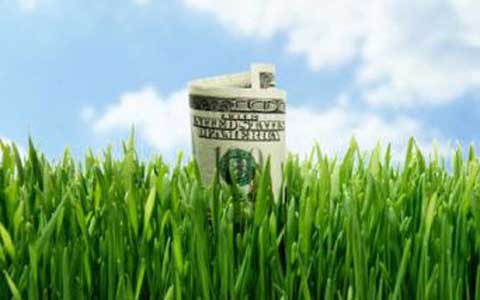In most countries, land is a very desirable commodity. This is evidenced by sprawling cities and expanding commercial developments. Land is a limited non-renewable resource that plays a vital role in a country’s economy. Land resources and its management are of fundamental importance for sustainable, environmental, social, and economic development.
Open land is often consumed at a rapid rate by cities and developers hungry for space to build more housing, retail, industrial, and office space. While abandoned and vacant properties depress property values, discourage property ownership, and attract criminal activities in the surrounding area, a Strategic Land Investment Project provides tools to quickly turn these tax- reverted properties back into usable parcels that reinvest in the community’s long-term vision for its neighborhoods.
In anticipation of future development, investors, as well as municipal or provincial governments, may purchase and hold land that is vacant, rural or underutilized at an attractive price before its value rises once it falls in the path of development. This practice is called “SLIM” (Strategic Land Investment Model ). The key to successful Strategic Land Investment Projects is to acquire land in areas with a shortage of land relative to the demand.
Intensification polices will continue to propel land values in the gateway cities: available sites look like gold. Land may seem expensive today, but it may look like a bargain tomorrow.
Facts about Land…
The world has a total surface area of 510 million square kilometres of exposed land and water:
■ 361 million sq km (70.9%) of the surface is water
■ 149 million sq km (29.1%) of the surface is land
Taylor Scott International estimates that out of the 149 million sq km of land, approximately 70 million sq km (slightly less than 50%) is habitable. The world’s population has now reached 7 billion. This represents an average of 100 people per square kilometre. In addition to people, we also need to account for such amenities as:
■ dwelling units (homes)
■ schools and hospitals
■ parks and recreation properties
■ rivers, lakes and reservoirs
■ retail, commercial and industrial properties
■ railway, airports, roads and other transportation
■ utilities, waste management, and treatment plants
■ agricultural land and livestock
■ resources and mining properties
■ shopping malls and retail space
■ all of the earth’s wildlife and forests
Now… one square kilometer of land for 100 people really doesn’t seems so big any more, does it?
Is it 100% safe?
Real estate is a commodity subject to cycles in terms of its underlying supply and market demand. An investment in land is also price sensitive relative to other available financial assets.
The importance of a disciplined disposition strategy dictates where to search for acquisition opportunities. A good strategy is to acquire well-located quality properties within desirable markets with good future development potential. Re-zoning of a property will also add value. It is also necessary to bring services to the land in preparation for development. Sites that will benefit from infrastructure development and public transportation improvement plans are also considered as good options.

Real estate is the world’s largest asset class and comprises over 50% of global financial wealth. Regardless of location, language, work, or culture, every human being on this planet needs real estate. Unique characteristics of real estate include:
■ Increases in value as it ages – it is a real asset
■ Demand for land increases over time as supply shrinks
■ Remains develop able, as it is a non expendable commodity
■ Is strategic and secure for both local and foreign investments
Real estate, for the most part, is illiquid and difficult to monetize when needed. Real estate assets are not typically added to investment portfolios due to their relative lack of liquidity. Generally, investors acquire real estate with a longer term holding strategy as real estate does not trade as efficiently as equities and bonds. In addition, transaction costs associated with the acquisition and disposition of real estate are much higher than for stocks and bonds.
Is it Risk free?
Any market that looks solid and secure we have to remember that has the same chances to fluctuate as any other market (It is not if … it is when this will happen) .Timing is one of the most important parameters when it comes to take investment decisions and we must be ready to get in as well as to get out of the market before it is too late.
Usually when property prices rise because people gorge themselves on debt, the ensuing recession tends to be particularly deep and long. Over-leveraged households cut their consumption drastically. Output and employment collapse, and that could lead to an economic collapse which is essentially a severe version of an economic depression, where an economy is in complete distress for months, years or possibly even decades.
So when we are involved with real estate investments (or any other investment) we must always be under alert .Nothing is 100% risk free .As long as we are ready to make an investment in Land or any other property we must be aware of the risks involved and ready to take the losses if there will be any .
We cannot predict the future but we can always learn from the past in order to see ASAP the signs of the market .We need always to remember that markets fluctuate and try to read the signs in order to minimize our Risk and have a successful investment .
By Kosta Kioleoglou REValuer (Tegova)
Directοr of Engineering & Valuations
Civil Engineer Msc- DBM
Taylor Scott International


